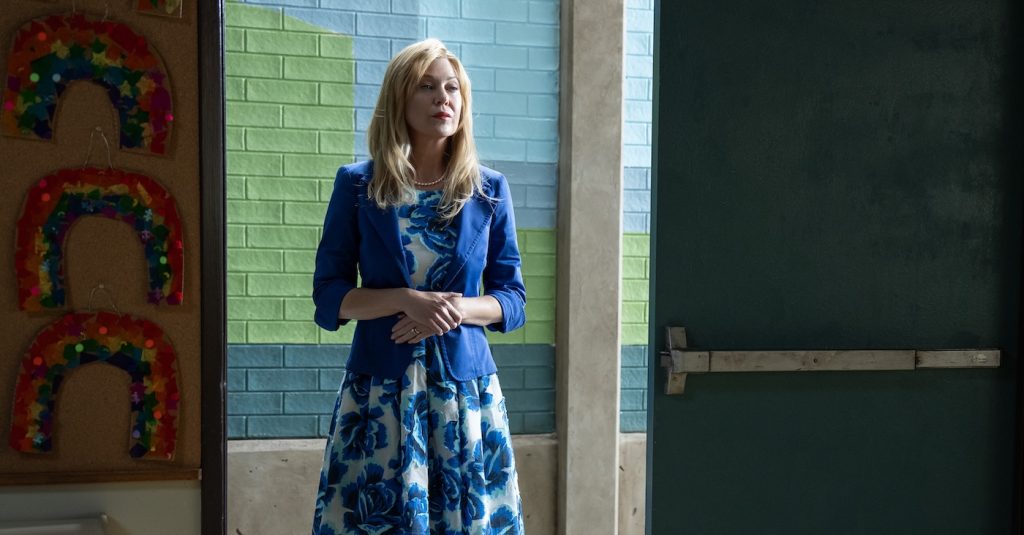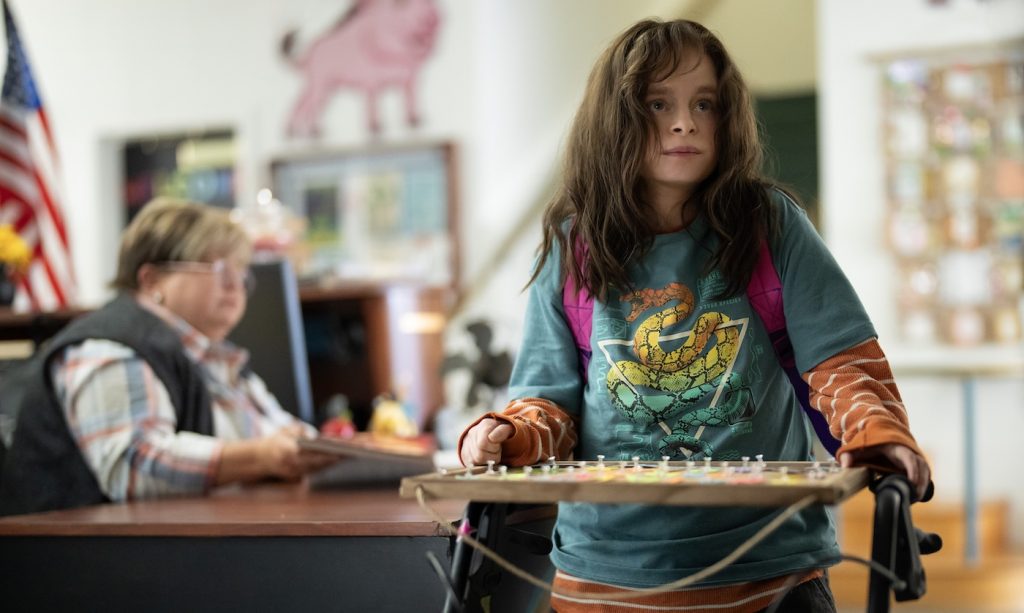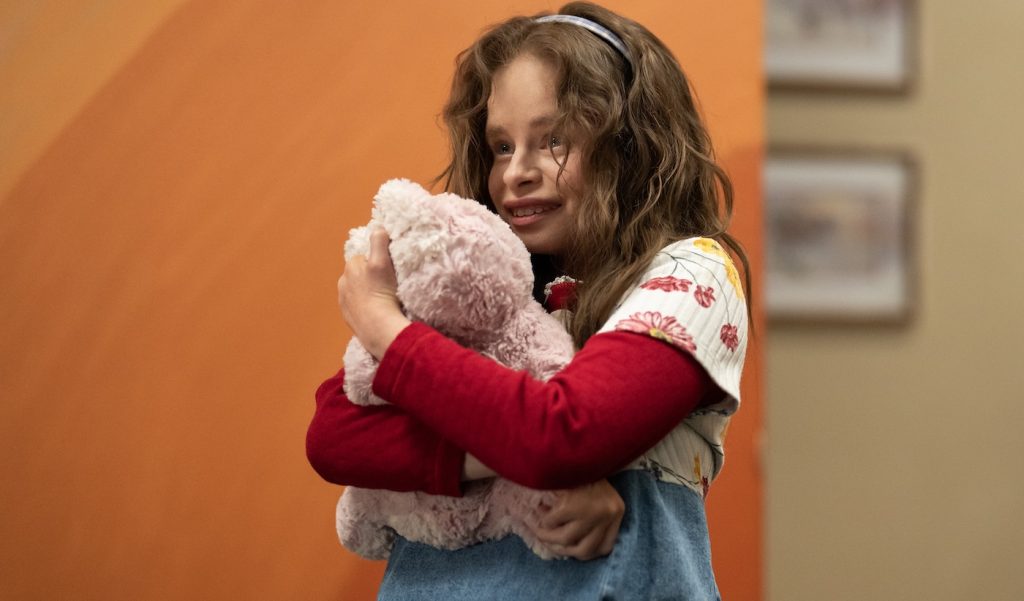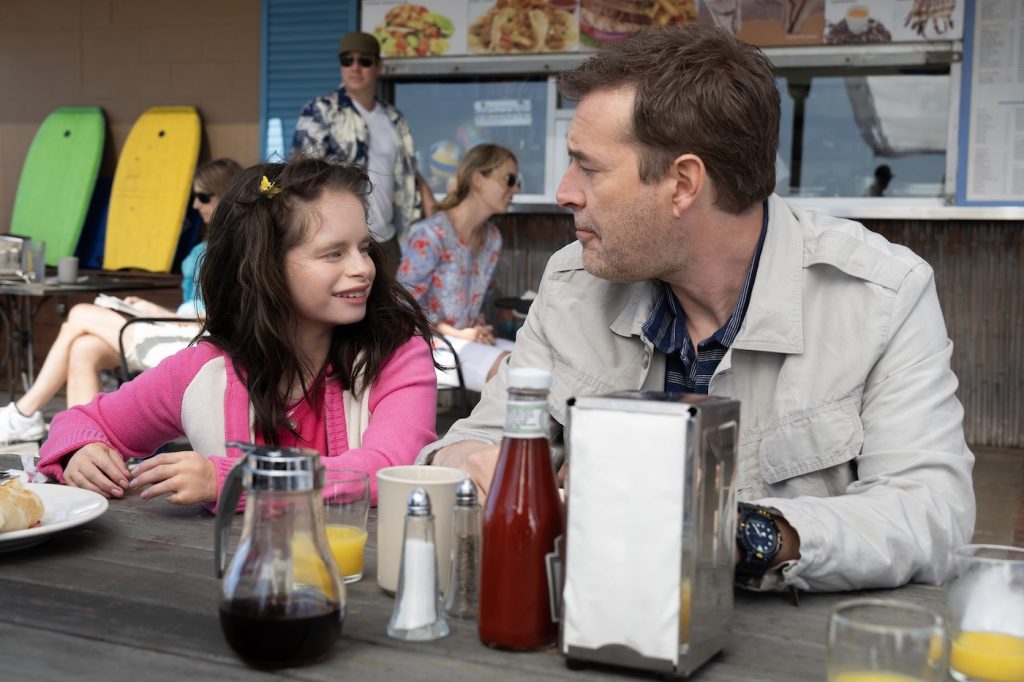Unreliable Narrators: Liz Garbus on Directing Hulu’s Chilling Adoption Mystery “Good American Family”
Good American Family rolled into living rooms last month like a TV Trojan Horse, appearing at first to be a domestic drama peppered with garden-variety stress. Grey’s Anatomy star Ellen Pompeo plays super-mom Kristine Barnett, acclaimed author of “The Spark,” about her autistic son who gained early admission to Princeton University thanks to her nurturing ways and the loving support of husband Michael (Mark Duplass). Everything changes when the Indiana couple adopts Ukrainian orphan Natalia Grace, who has a rare form of dwarfism. She’s portrayed with mesmerizing intensity by first-time actor Imogen Faith Reid.
Created by Katie Robbins (The Affair) and filmed in Los Angeles County, the eight-episode fact-based mystery (which streams on Hulu on Wednesdays through April) unfurls a multiple-perspective succession of lies, forgeries, mutilated toys and accusations of abandonment. The first and fifth episodes of the show are directed by Liz Garbus, a two-time Oscar nominee and Emmy winner acclaimed for her documentaries about Abu Ghraib, the Mississippi prison system, and the so-called “Golden State Killer.”
From her office in Brooklyn, Garbus tells The Credits about applying her documentary acumen to the scripted space and describes the allure of directing a show in which each major character presents a completely different version of the truth.
What attracted you to the Good American Family story?
I’ve worked in the scripted space, I’ve worked in the documentary space, and I do it because film and television storytelling can put you into someone else’s shoes, so you look at the world in a different way. What Katie Robbins has done with Good American Family is tell a story that can be interpreted so differently depending on where you’re sitting and who you’re listening to. Good American Family was a wonderful way to explore how our perspective affects our judgments of people. I directed episode one, which establishes Kristine’s point of view, and then I came back for episode five from Natalia’s point of view. When you switch the shoes that you’re walking in, the world looks very different.

Imogen Faith Reid portrays orphan Natalia with astonishing zeal. How did you find her?
When I came in, she was already cast. It’s such a tricky part when you’re playing many different versions of the same self, but in the end, Imogen rose to the occasion. She’s fearless and confident but incredibly trusting at the same time.
On set, you must have realized you’d struck gold the first time that Imogen shoots her parents “the look.” Without saying a word, Natalia projects a lot of power.
“The look” you refer to is something we did many takes with different levels of “sauce” and different levels of innocence. Imogen could do it at 90, and she could do it at 20, so we had enormous latitude in the editing room to dial it up and dial it down as we went on this journey of perception. Many parents are familiar with a look like this because it’s really a look of total stubbornness: “I’ve got ya beat.”

You and your team swapped locations in Los Angeles County for Indiana. Shooting in southern California, were you mindful of the impact your work has on the local filmmaking economy?
Absolutely. Especially shooting when we did, which was not long after the strike, there were people who’d taken jobs at sporting goods stores, so they were especially appreciative to be back at work. Working out of Santa Clarita, we got the best of the best with a wonderful crew that was deeply respectful. We were often dealing with sensitive subject matter like dwarfism, and everybody was there to learn. It was pretty dreamy.
You’ve recently branched out into scripted shows, including The Handmaid’s Tale and Yellowjackets, but you built your career on nonfiction films. How have you applied your documentary skills to a series like Good American Family?
There are a lot of similarities between working with actors and working with real-life people in documentaries – in fact, actors are actually people! [Laughing]. As a director, part of what you do with actors is to listen and understand their challenges, which is kind of similar to talking to a documentary subject about something in their life or something they’ve witnessed. You’re there to support them and get the best out of them. Both documentaries and scripted shows have that interpersonal element in common.
What’s the biggest difference?
The speed at which a large scripted production moves is much slower than that of a small documentary crew in terms of what you can expect to get done in a day. On Good American Family, there might be 100 people you have to move from one place to another, so the number of things you do to get from A to B is much greater than a documentary crew; you can just get in a van and move. The flip side of the coin is that in scripted, you have all the toys and bells and whistles to control the image. Your ability to tell stories through the visual element is far greater, and that’s why it takes so many more people.

Grey’s Anatomy star Ellen Pompeo reveals a totally different aspect of her acting talent in Good American Family. Was she an interesting person to collaborate with?
Like probably every American, knew about Meredith Grey, but when I first zoomed with Ellen during pre-production, I found that she was humble and really hungry to take on something new. Ellen would be the first to say “I’ve been playing it safe for a long time.” To make herself vulnerable in the way that she did, Ellen really set herself up for success.
Her Kristine seems to hint at some kind of simmering tension underneath all those big sunny smiles.
I want viewers to have their own experience of the character, so I don’t want to spoil that journey, but as we say at the beginning of episode one, “This is a version of events.” Are we wearing someone’s rose-colored glasses as they describe their life story? That’s a question viewers may begin to ask. By the time you get to episode five, a lot of that will become clear.
Kristine’s husband is portrayed by Mark Duplass, an indie film veteran who most recently appeared in The Morning Show. How did you approach his character?
Michael Barnett struggles with mental illness, and Mark’s need for validation within this family is something you can really feel Mark carrying everywhere in his performance. There were lots of discussions about how grounded versus stylized these characters should be. We wanted that to evolve as the season progresses.

Your work often explores dark territory, and despite the title, Good American Family is no day at the beach. How do you maintain your emotional equilibrium?
I think I’m genetically predisposed to some kind of compartmentalization. I started out making a film [Oscar-nominated The Farm: Angola USA] about people behind bars in a prison where every person I met, the pain was so deep. You have to care, but you also have to be able to shut your brain off sometimes, so a little compartmentalizing in life is what keeps me sane. And my kids really help. The biggest joy is being with family. I never take for granted.
Featured image: GOOD AMERICAN FAMILY – “Jump the Jitters Out” – Natalia has a rocky start at school, and Kristine’s suspicions about the adoption deepen. Michael receives unexpected news at work. (Disney/Ser Baffo) MARK DUPLASS, IMOGEN FAITH REID



